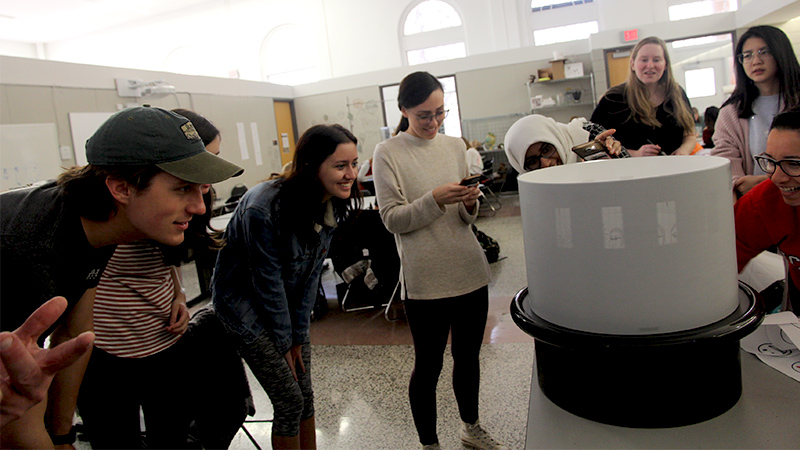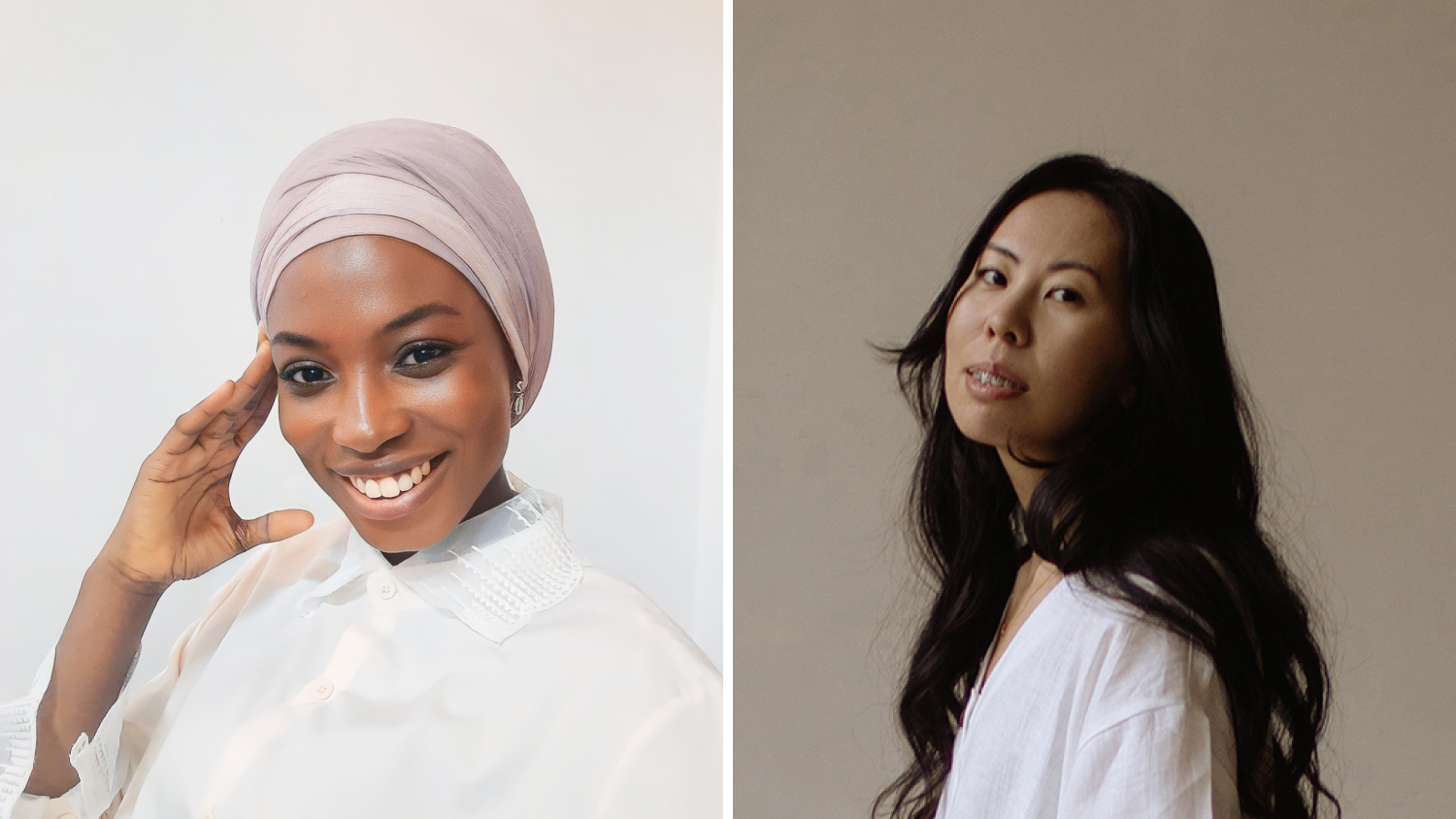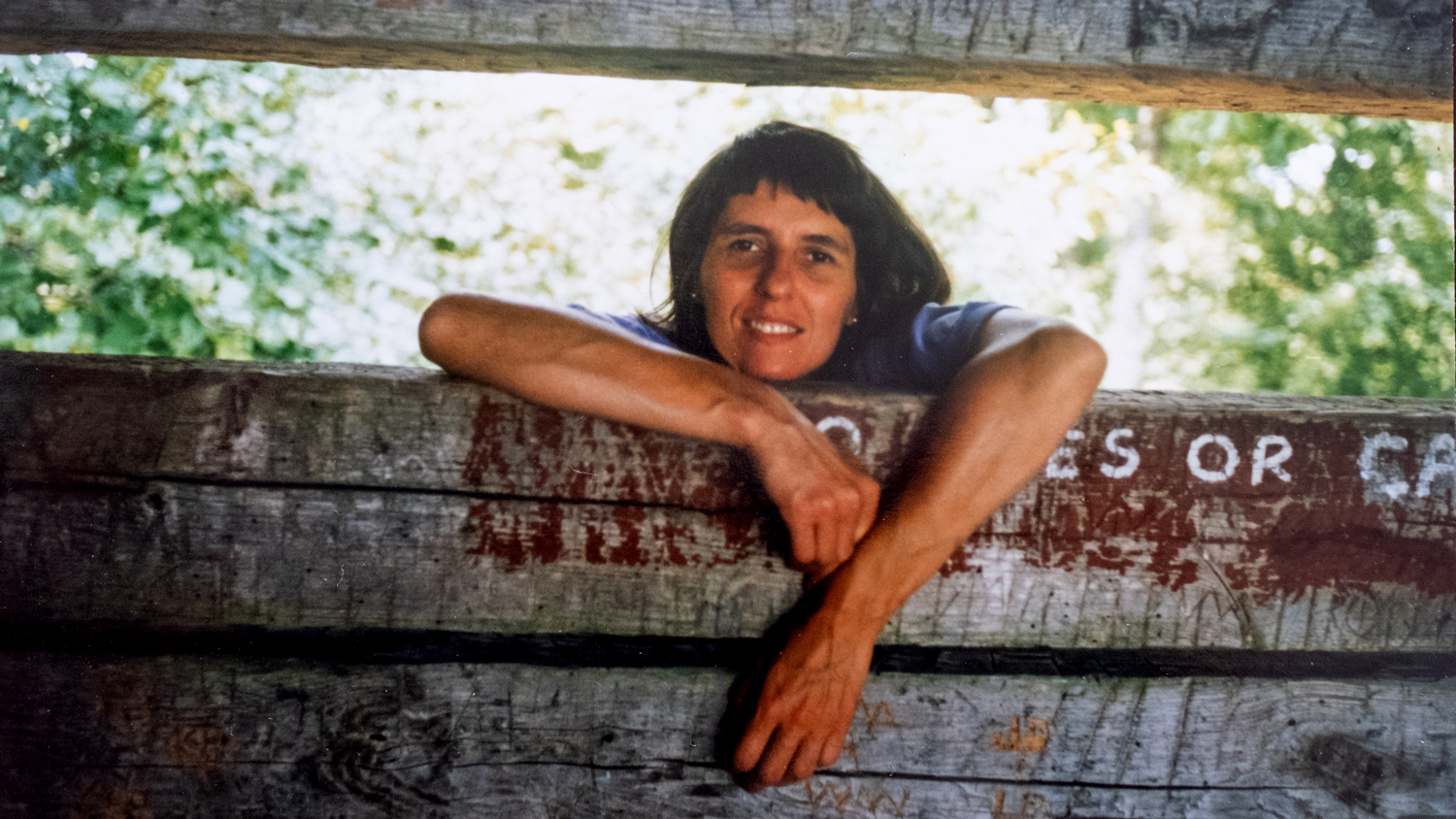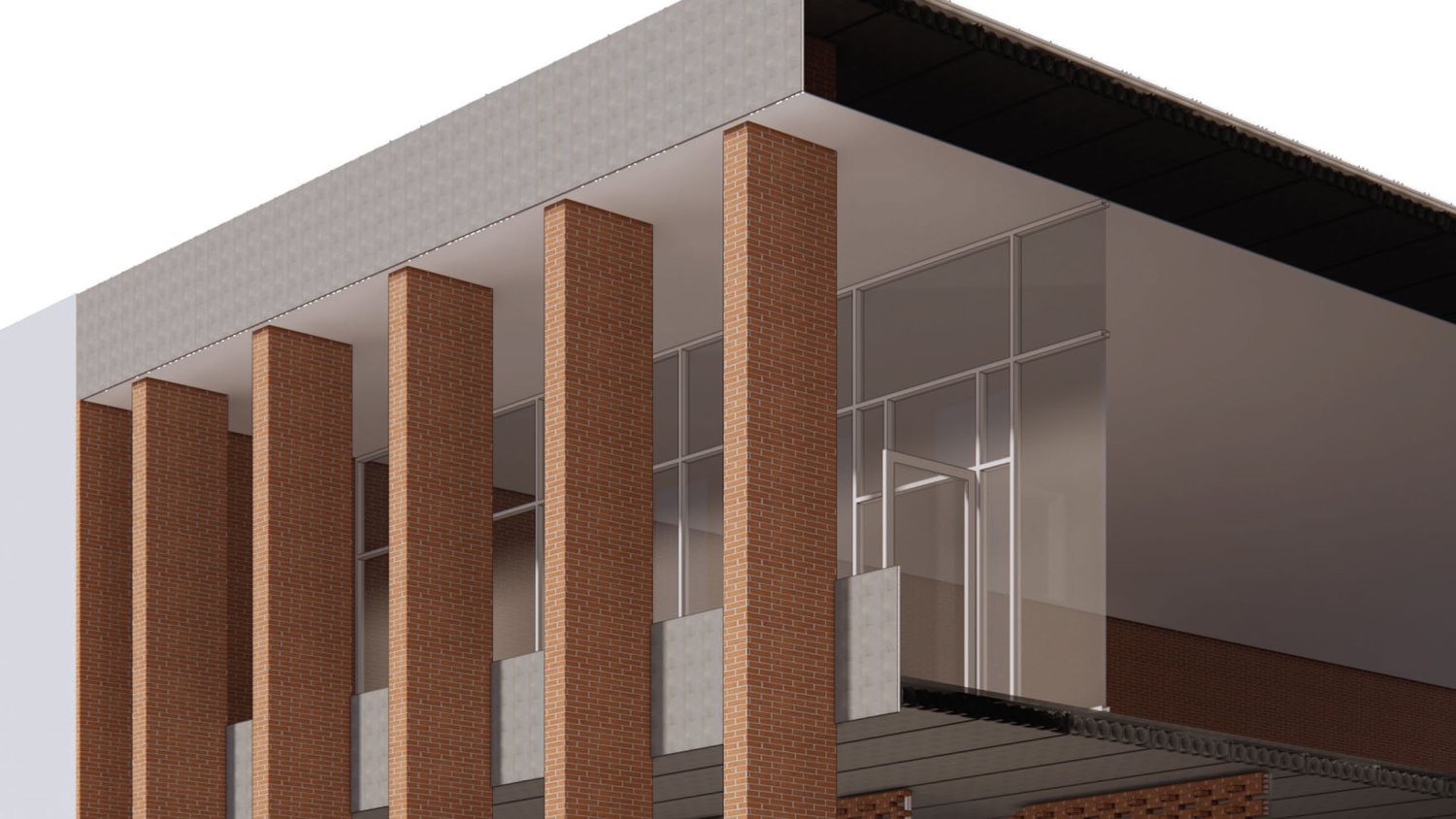An Influential Studio for Non-Design Majors
A zoetrope is an early animation device that produces the illusion of motion by displaying a progressive sequence of images. The device is a simple barrel that has vertical windows and spins in either direction at varying speeds. Sequential images are placed within the drum, and as it is spun, the viewer can look into the vertical slits and see the animation come to life. The College of Design has the pleasure of owning one of these unique devices, which was a gift to Susan Tuplikar—one of the first animation faculty members at the College—by her husband Mike Cindric [M.Arch ’89] who was an industrial designer.
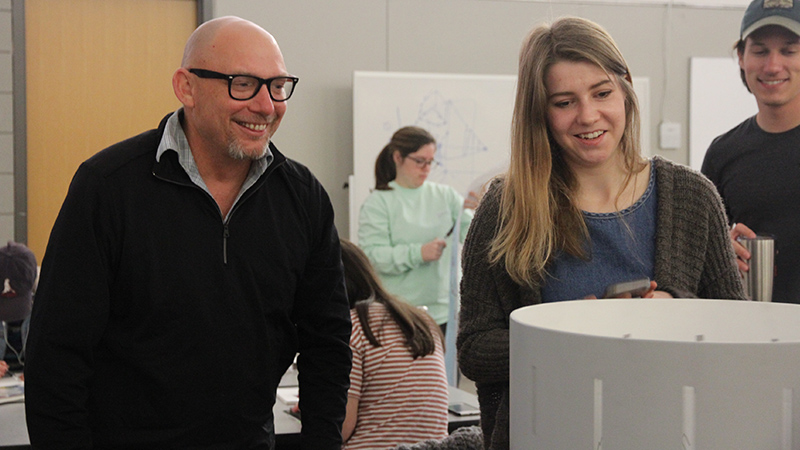 Pat FitzGerald, associate professor of Art + Design, has incorporated the zoetrope into the coursework for ADN 111 Two-Dimensional Design. “This course is about removing the barriers to being a creative and any apprehensions that someone may have,” says FitzGerald. He uses the zoetrope to expose students to simple animation techniques.
Pat FitzGerald, associate professor of Art + Design, has incorporated the zoetrope into the coursework for ADN 111 Two-Dimensional Design. “This course is about removing the barriers to being a creative and any apprehensions that someone may have,” says FitzGerald. He uses the zoetrope to expose students to simple animation techniques.
ADN 111 is an introduction to design principles course specifically intended for students from across the University. “These students are non-design majors, and what they have done [during this course] is they have shown me that they have the chops and more to do design. They are sharp and hardworking,” FitzGerald says. “There are several engineering students, two from the honors program, one from psychology, and several others,” adds FitzGerald.
Prior to taking this course, students may think, “I’m not good at art, I don’t have good ideas, I have no talent, people will criticize me,” says FitzGerald. “As a class, we rebuke each one of these barriers, one after another. It takes courage, and over the semester they build their creative confidence.”
Each student is required to keep a journal or a sketchbook. “This is a major artifact that they will walk away from here and have as a visual diary of the class,” FitzGerald says. Each week, students are assigned to draw something in their sketchbook based on a given theme that is general enough that FitzGerald hopes they can each identify with. “They can use their weekly drawings, and it can become a series. It is working towards creating a situation where people can continue to stay creative even after this class and to practice creativity and making.”
FitzGerald also says, “we have a rule: there is a front and a back to these books, the front of the book is for assignments and the back is for self-work, unedited and unlimited to what they feel is creative at the moment.” FitzGerald adds that he doesn’t even look at the back of the book and considers it “theirs.”
For one class assignment, students must create an animation sequence using the zoetrope. The animation projects are varied from a growing heart shape, flapping of puppy ears, a fish jumping out of water, and the sun rising above the mountains and circling around. Students experiment with the speed of the drum and how it affects their animation.
Students are testing out their animations using the zoetrope.
As the students share each of their animation sequences using the zoetrope and have the opportunity to test out their designs, there is constant amazement and verbal raves from everyone. They are laughing and appreciative of each other’s work. One student shares that she is a senior in nuclear engineering and wanted to take this course because she thought it would be fun. It has provided a lot of relaxing opportunities, she says.
FitzGerald encourages each student to take a video of their animation. “You will not likely have the opportunity to show this animation to others without your video, unless you happen to own a giant zoetrope,” he says. This project can be difficult or impossible to recreate on a computer, so taking the video with their phones is their best option to share their work.
The class is fairly large in size with about 22 students. “Practically speaking,” FitzGerald says, “with over twelve students in a studio, it can get difficult. We try to keep the situation where we are low key and everyone has to turn in something each week. As a group, we walk around and critique and admire each other’s work and discuss their journals.”
One student, Madelyn Lammert, a senior in industrial engineering shares, “I’m not a design student, but I’m hoping to become one for grad school. I want to come here for industrial design, and I am currently getting a minor in Art + Design. This studio is helping to build up my portfolio so that I have something for when I apply.”
FitzGerald emphasizes, “these non-design student studios are important to the College and to the University. It’s an opportunity to expose students from a wide array of disciplines to the great value and benefit of design.”
- Categories:
